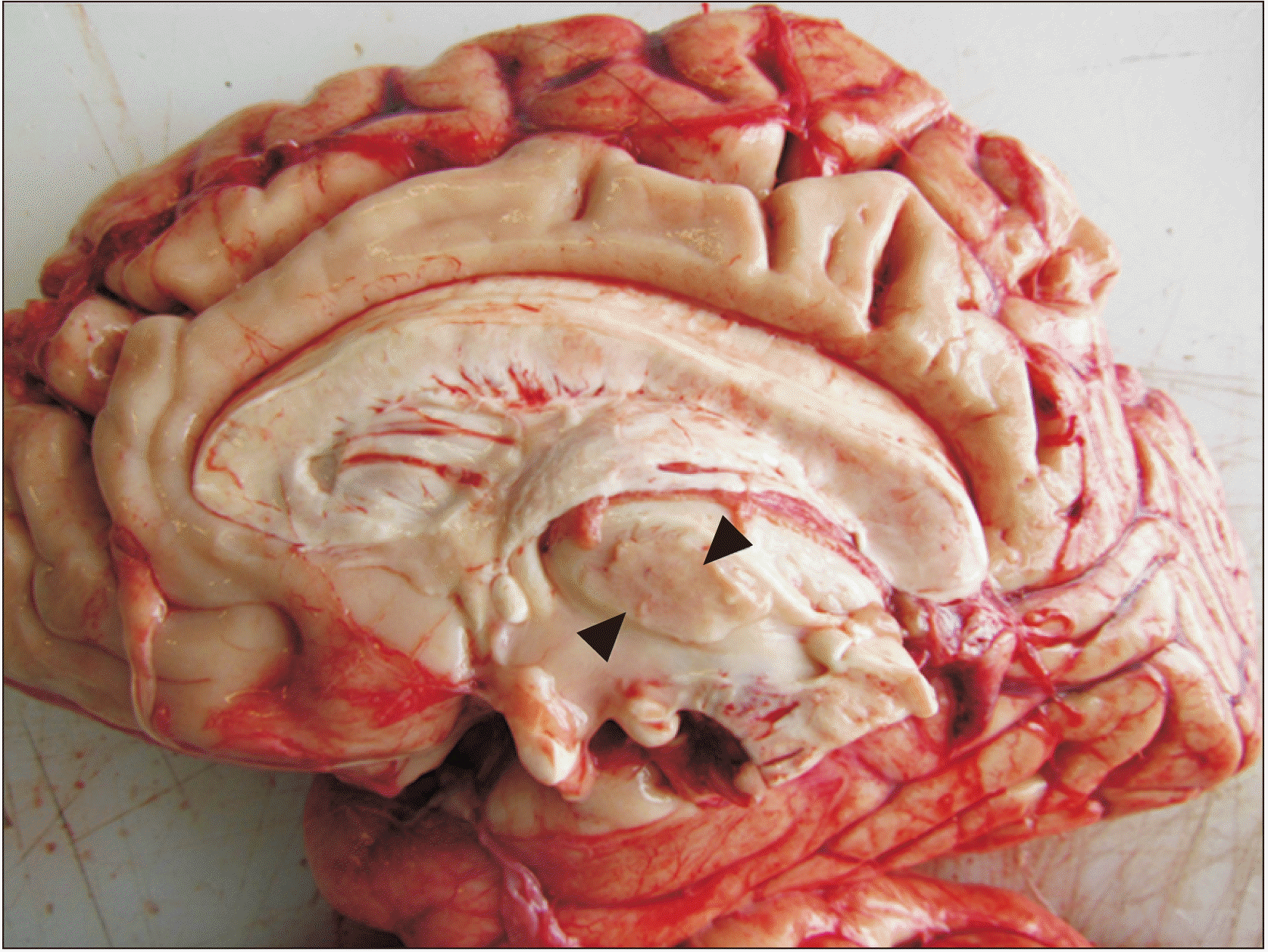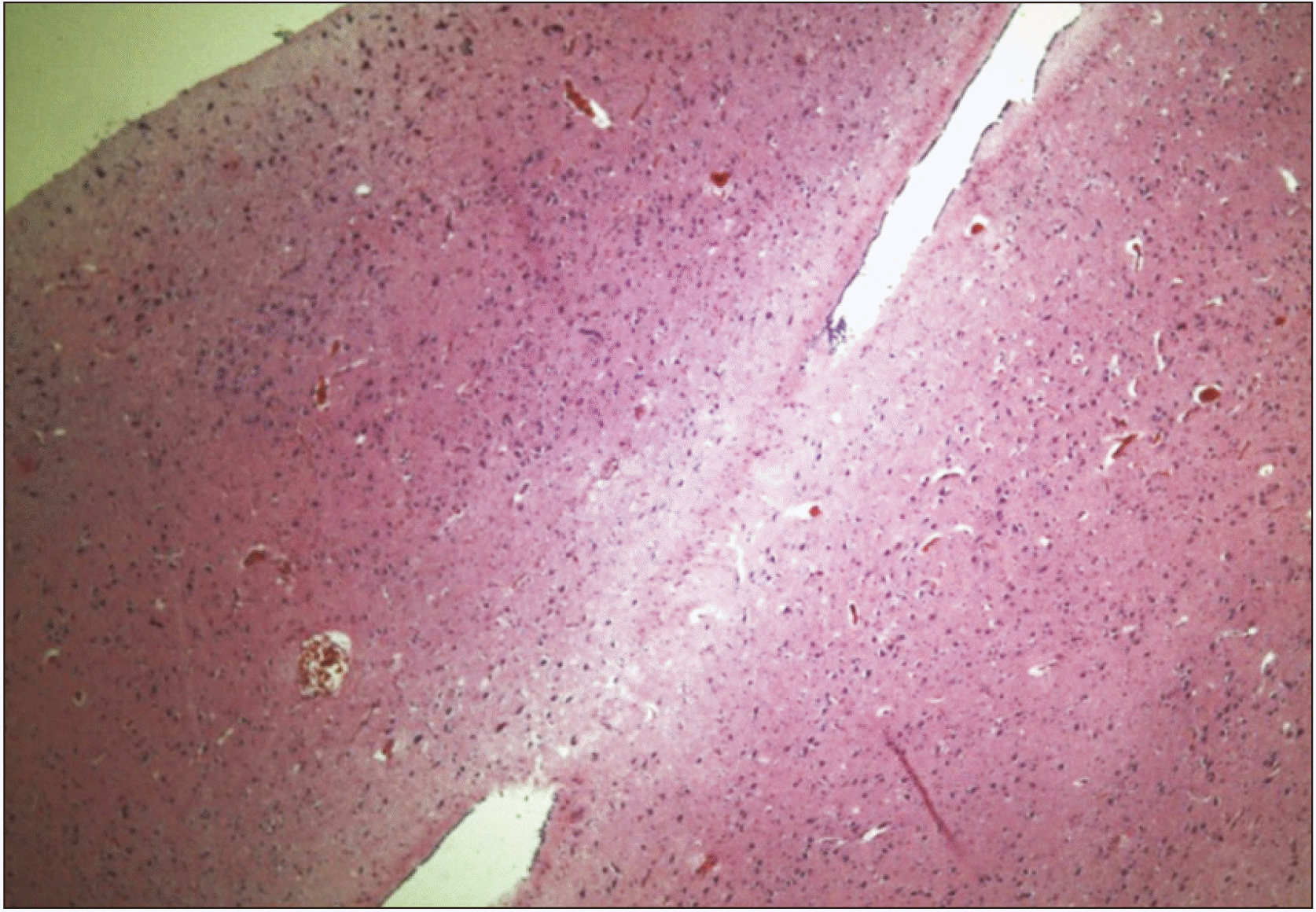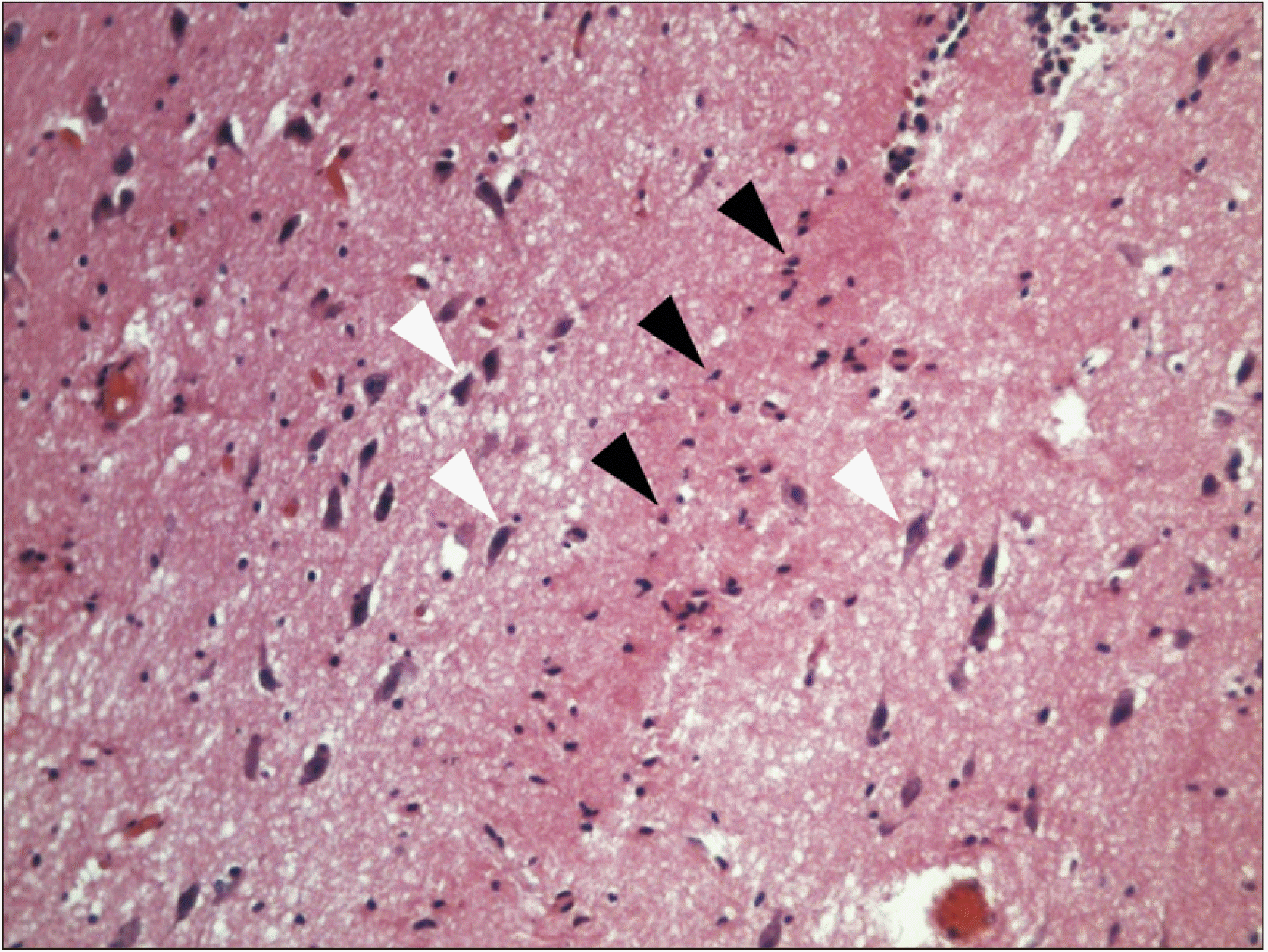1. Federative Committee on Anatomical Terminology. 1998. Terminologia anatomica: international anatomical terminology. Thieme;New York: p. 120.
2. Lansdell H, Davie JC. 1972; Massa intermedia: possible relation to intelligence. Neuropsychologia. 10:207–10. DOI:
10.1016/0028-3932(72)90061-9.

3. Malobabić S, Puskas L, Blagotić M. 1987; Size and position of the human adhaesio interthalamica. Gegenbaurs Morphol Jahrb. 133:175–80.
4. Trzesniak C, Kempton MJ, Busatto GF, de Oliveira IR, Galvão-de Almeida A, Kambeitz J, Ferrari MC, Filho AS, Chagas MH, Zuardi AW, Hallak JE, McGuire PK, Crippa JA. 2011; Adhesio interthalamica alterations in schizophrenia spectrum disorders: a systematic review and meta-analysis. Prog Neuropsychopharmacol Biol Psychiatry. 35:877–86. DOI:
10.1016/j.pnpbp.2010.12.024. PMID:
21300129.

5. Tubbs RS, Smyth MD, Oakes WJ, Blount JP. 2004; Duplication of the massa intermedia in a child. Pediatr Neurosurg. 40:42–3. DOI:
10.1159/000076578. PMID:
15007230.

6. Vélez García JF, Pedraza Ordoñez FJ, Duque Parra JE. 2013; La adhesión intertalámica del bovino: un estudio piloto. Rev Med Risaralda. 19:30–1. Spanish.
7. Duque A, Roa E, Castedo J. 2008; White matter anatomy using tensor diffusion tractography. Radiologia. 50:99–111. Spanish. DOI:
10.1016/S0033-8338(08)71944-1.
8. Satheesha Nayak B, Soumya KV. 2010; Unusually large interthalamic adhesion and its clinical importance. Int J Anat Var. 3:174–5.
10. Zawitsch C. 1952; Kommissuren und andere Fasersysteme in einer Massa intermedia Thalami des Menschen. Wien Z Nervenheilkd Grenzgeb. 4:74–93. German.
12. Firbas W, Volavsek C. 1970; Ontogenesis of adhaesio interthalamica (massa intermedia) in man. Anat Anz. 126:205–10. German.
13. Cholvin T, Loureiro M, Cassel R, Cosquer B, Geiger K, De Sa Nogueira D, Raingard H, Robelin L, Kelche C, Pereira de Vasconcelos A, Cassel JC. 2013; The ventral midline thalamus contributes to strategy shifting in a memory task requiring both prefrontal cortical and hippocampal functions. J Neurosci. 33:8772–83. DOI:
10.1523/JNEUROSCI.0771-13.2013. PMID:
23678120. PMCID:
PMC6618831.

14. Damle NR, Ikuta T, John M, Peters BD, DeRosse P, Malhotra AK, Szeszko PR. 2017; Relationship among interthalamic adhesion size, thalamic anatomy and neuropsychological functions in healthy volunteers. Brain Struct Funct. 222:2183–92. DOI:
10.1007/s00429-016-1334-6. PMID:
27866270. PMCID:
PMC5816973.

15. Olry R, Haines DE. 2005; Interthalamic adhesion: scruples about calling a spade a spade? J Hist Neurosci. 14:116–8. DOI:
10.1080/096470490910128. PMID:
16019656.

16. Kochanski RB, Dawe R, Kocak M, Sani S. 2018; Identification of stria medullaris fibers in the massa intermedia using diffusion tensor imaging. World Neurosurg. 112:e497–504. DOI:
10.1016/j.wneu.2018.01.066. PMID:
29408589.

17. Rabl R. 1958; Studies on the structure of the massa intermedia of the thalamus opticus. J Hirnforsch. 4:78–112. German. DOI:
10.1515/9783112532669-005. PMID:
13598875.
18. Ciftcioglu E, Ozyurek H, Nural MS, Kopuz C, Incesu L, Ogur G. 2015; Absence of the lateral and third ventricles associated with holoprosencephaly. Anat Cell Biol. 48:222–4. DOI:
10.5115/acb.2015.48.3.222. PMID:
26417484. PMCID:
PMC4582167.

19. Duque Parra JE, Marín Arias F, Duque Vera IL. Interthalamic adhesion: an approach from basic science to implement clinic neuroimaging. Paper presented at: 3rd European Conference on Clinical Neuroimaging. 2014 Mar 31-Apr 1; Lille, France. p. 27–8.
20. Mohammadi MR, Hosseini SH, Golalipour MJ. 2008; Morphometric measurements of the thalamus and interthalamic adhesion by MRI in the South-East of the Caspian Sea border. Neurosciences (Riyadh). 13:272–5.
21. Laslo P, Slobodan M, Nela P, Milos M, Rade P, Tatjana I. 2005; Specific circular organization of the neurons of human interthalamic adhesion and of periventricular thalamic region. Int J Neurosci. 115:669–79. DOI:
10.1080/00207450590524340. PMID:
15823931.

22. Agarwal N, Rambaldelli G, Perlini C, Dusi N, Kitis O, Bellani M, Cerini R, Isola M, Versace A, Balestrieri M, Gasparini A, Mucelli RP, Tansella M, Brambilla P. 2008; Microstructural thalamic changes in schizophrenia: a combined anatomic and diffusion weighted magnetic resonance imaging study. J Psychiatry Neurosci. 33:440–8.
23. Haghir H, Mokhber N, Azarpazhooh MR, Haghighi MB, Radmard M. 2013; A magnetic resonance imaging study of adhesio interthalamica in clinical subtypes of schizophrenia. Indian J Psychiatry. 55:135–9. DOI:
10.4103/0019-5545.111450. PMID:
23825846. PMCID:
PMC3696235.

24. de Souza Crippa JA, Zuardi AW, Busatto GF, Sanches RF, Santos AC, Araújo D, Amaro E, Hallak JE, Ng V, McGuire PK. 2006; Cavum septum pellucidum and adhesio interthalamica in schizophrenia: an MRI study. Eur Psychiatry. 21:291–9. DOI:
10.1016/j.eurpsy.2005.09.010. PMID:
16406503.

25. Takahashi T, Yücel M, Yung AR, Wood SJ, Phillips LJ, Berger GE, Ang A, Soulsby B, McGorry PD, Suzuki M, Velakoulis D, Pantelis C. 2008; Adhesio interthalamica in individuals at high-risk for developing psychosis and patients with psychotic disorders. Prog Neuropsychopharmacol Biol Psychiatry. 32:1708–14. DOI:
10.1016/j.pnpbp.2008.07.007. PMID:
18675876.

26. Cheng S, Tan K, Bilston LE. 2010; The effects of the interthalamic adhesion position on cerebrospinal fluid dynamics in the cerebral ventricles. J Biomech. 43:579–82. DOI:
10.1016/j.jbiomech.2009.10.002. PMID:
19896132.

27. Samra KA, Cooper IS. 1968; Radiology of the massa intermedia. Radiology. 91:1124–8. DOI:
10.1148/91.6.1124. PMID:
5303380.

28. Dauber W, Feneis H. 2007. Pocket atlas of human anatomy. 5th ed. Thieme;New York: p. 360. DOI:
10.1055/b-005-148848.
29. Park KA, Lee HY, Chung IH, Han YP, Shin TS. 1993; A morphologic study of interthalamic adhesions in Korean brains. Clin Anat. 6:33–6. DOI:
10.1002/ca.980060106.

30. Sullivan EV, Rosenbloom M, Serventi KL, Pfefferbaum A. 2004; Effects of age and sex on volumes of the thalamus, pons, and cortex. Neurobiol Aging. 25:185–92. DOI:
10.1016/S0197-4580(03)00044-7.

31. Paulus W. 2016; Los efectos de la estimulación transcraneal. Mente Cereb. 76:46–53. Spanish.







 PDF
PDF Citation
Citation Print
Print



 XML Download
XML Download